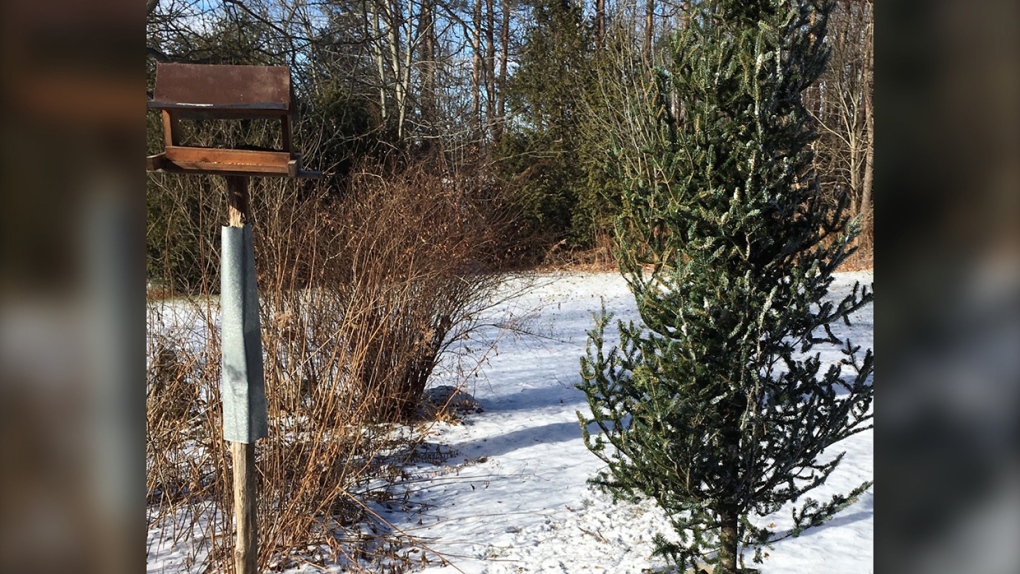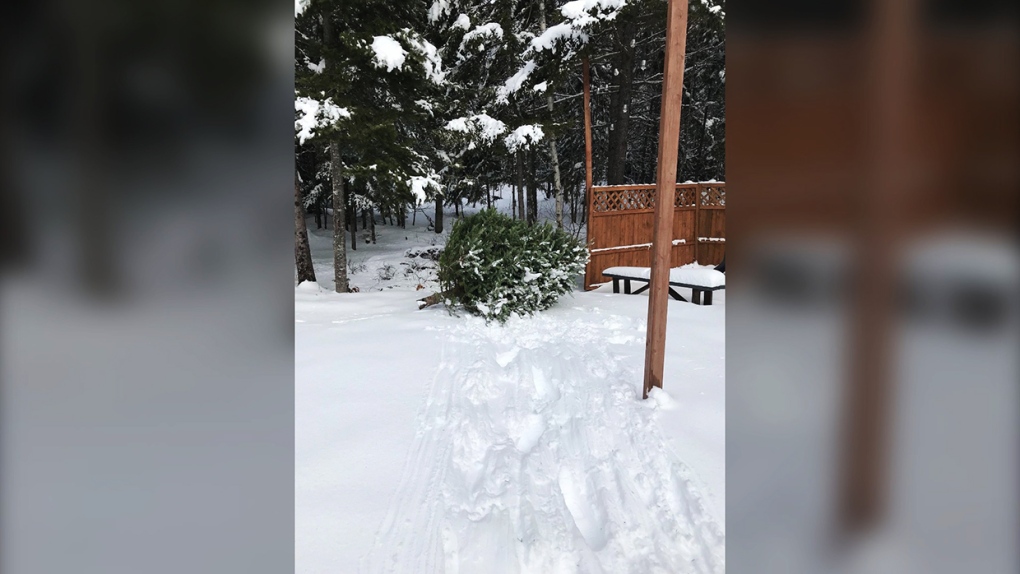Keeping your Christmas tree in the backyard is good for environment: Nature Conservancy of Canada
 Leaving a tree in the backyard can provide important habitat for bird populations during the winter months, especially on cold nights and during storms.
Leaving a tree in the backyard can provide important habitat for bird populations during the winter months, especially on cold nights and during storms.
For those looking to find a second act for your Christmas tree, consider just leaving it in the backyard.
The Nature Conservancy of Canada suggests letting the urban wildlife that is part of everyone's garden and backyard do the recycling themselves, instead of having the city haul it away.
Leaving a tree in the backyard can provide important habitat for bird populations during the winter months, especially on cold nights and during storms, according to the NCC's national conservation science manager, Samantha Knight.
The conservancy calls this practice a small act of conservation.
The process starts with location: simply prop it against another tree, the fence or else lay it in the garden.
You can even redecorate it with treats to attract wildlife, like peanut butter-filled pine cones, strings of peanuts, or suet for birds to chew on at the same time they take shelter in the tree.
“Evergreens offer a safe place for birds to rest while they visit your feeder,” said Knight. “Another benefit is that if you leave the tree in your garden over the summer, it will continue to provide habitat for wildlife and improve your soil as it decomposes.”
By spring, the tree will have lost its needles. At that point, you can cut the branches and add them to your garden, then lay the trunk of the tree in the soil but not on top of any flowers.
 Leaving a tree in the backyard can provide important habitat for bird populations during the winter months, especially on cold nights and during storms.
Leaving a tree in the backyard can provide important habitat for bird populations during the winter months, especially on cold nights and during storms.
Branches and trunk provide habitat, shelter wildflowers, hold moisture and enhance soil. Frogs may seek shelter under the log, and insects, like carpenter bees, may burrow into the wood.
“By fall, the branches and trunk will begin to decompose and turn into soil,” said Knight. “Many of our Christmas trees, particularly spruce and balsam fir, have very low rot resistance and break down quickly when exposed to the elements. The more contact the cut branches and trunk have with the ground, the quicker it will decompose. Drilling holes in the tree trunk will speed up that process."
CTVNews.ca Top Stories

MPP Sarah Jama asked to leave Ontario legislature for wearing keffiyeh
MPP Sarah Jama was asked to leave the Legislative Assembly of Ontario by House Speaker Ted Arnott on Thursday for wearing a keffiyeh, a garment which has been banned at Queen’s Park.
Mountain guide dies after falling into a crevasse in Banff National Park
A man who fell into a crevasse while leading a backcountry ski group deep in the Canadian Rockies has died.
2 teens charged in Halifax homicide: police
Two teenagers have been charged with second-degree murder in connection to an alleged homicide near the Halifax Shopping Centre earlier this week.
'Deep ignorance': Calls for Manitoba trustee to resign sparked after comments about Indigenous people and reconciliation
A rural Manitoba school trustee is facing calls to resign over comments he made about Indigenous people and residential schools earlier this week.
12-year-old hippo in Japan raised as a male discovered to be a female
When Gen-chan arrived at a zoo in Japan in 2017, no one questioned whether the then-five-year-old hippopotamus was a boy. Seven years later, zoo staff made a surprising discovery: Gen-chan, now 12, was female.
Here's why Harvey Weinstein's New York rape conviction was tossed and what happens next
Here's what you need to know about why movie mogul Harvey Weinstein's rape conviction was thrown out and what happens next.
Legendary hockey broadcaster Bob Cole dies at 90: CBC
Bob Cole, a welcome voice for Canadian hockey fans for a half-century, has died at the age of 90. Cole died Wednesday night in St. John's, N.L., surrounded by his family, his daughter, Megan Cole, told the CBC.
Humanist group threatening to sue Vancouver over council prayers
The B.C. Humanist Association has threatened legal action against the City of Vancouver for allowing prayers at council, following a similar warning issued earlier this month to a smaller community on Vancouver Island.
LHSC performs a Canadian first in robot-assisted direct lateral spine surgery
Spine surgery may never be the same for people with chronic back pain and other physical ailments.
































